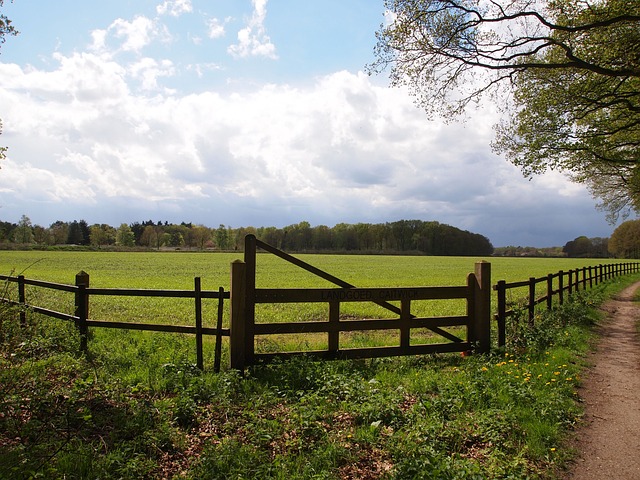discovered within the historic seaport of New Bedford, MA, ornamental fencing serves as a testament to the city’s rich tapestry of architectural history and innovative contemporary design. This article explores the diverse range of ornamental fencing styles that have evolved over time, from the grandeur of Victorian ironwork to the modern minimalism seen today. We will delve into how local materials and craftsmanship have shaped these styles, offering insights into how New Bedforders have used fencing not just as a boundary, but as an art form reflecting cultural identity and aesthetic values. Whether you’re seeking to preserve historical charm or incorporate modern flair, this guide will assist in selecting the ideal ornamental fencing style to enhance your home’s curb appeal while paying homage to the city’s vibrant past and forward-thinking future.
- Historical Fencing Styles of New Bedford
- Contemporary Ornamental Fencing Trends
- Local Materials and Craftsmanship Influences
- Selecting the Right Style for Your Home in New Bedford
Historical Fencing Styles of New Bedford
Ornamental fencing in New Bedford, MA, reflects a rich tapestry of historical styles that echo the city’s diverse cultural influences and architectural evolution. The early 19th century saw the introduction of Federal and Greek Revival designs, characterized by their straight lines, ornate details, and often, a whitewashed appearance that lent an air of elegance to private estates. These fences were typically constructed from wood or wrought iron, featuring intricate patterns and motifs such as urns, scrolls, and acanthus leaves, which signified wealth and status.
As the city matured, so did its fencing styles. The Victorian era brought a plethora of decorative elements, with fences often incorporating Gothic or Romanesque Revival motifs, including pointed arches, trefoil heads, and finials that crowned posts. This period also saw the advent of cast iron as a popular building material, which allowed for more elaborate designs and patterns that could last longer than wood. The early 20th century introduced Art Nouveau and Arts and Crafts influences, with fences that featured sleek lines, floral patterns, and a return to more natural materials, such as wrought iron combined with wood or stone. These styles underscored a move towards simplicity and functionality while still maintaining an aesthetic appeal.
Contemporary Ornamental Fencing Trends
In recent years, New Bedford, Massachusetts has seen a dynamic shift in ornamental fencing trends, reflecting both contemporary design principles and functional considerations. The modern era’s ornamental fencing transcends the traditional materials of wrought iron and wood, incorporating innovative materials such as composite, PVC, and recycled plastics that offer durability and low maintenance upkeep. These new materials come in a variety of finishes and can be fashioned into intricate patterns that rival the elegance of classic wrought iron while providing greater versatility in design. The current trends favor clean lines and minimalist aesthetics, with many homeowners opting for sleek, geometric shapes and patterns that complement modern architectural styles. Additionally, customization is key; ornamental fences are often tailored to reflect the unique character of a property, with bespoke designs incorporating personal touches that blend form and function seamlessly. The integration of smart technology has also made an impact, with options for self-closing gates, automated locking systems, and solar-powered lighting features that enhance both security and aesthetic appeal. These advancements in ornamental fencing not only elevate the visual appeal of New Bedford’s residential and commercial landscapes but also offer homeowners and businesses a sophisticated solution to privacy and security concerns in keeping with contemporary living.
Local Materials and Craftsmanship Influences
New Bedford, Massachusetts, a city with a rich maritime history, showcases its cultural heritage through the ornamental fencing styles that adorn its landscapes. The local materials used in these fencing designs reflect the region’s natural resources and craftsmanship traditions. Prominent among these are the native woods like pine, oak, and cedar, which offer both durability and aesthetic appeal. Local artisans, drawing from generations of expertise, employ traditional joinery techniques to create intricate patterns and designs that often incorporate nautical motifs, paying homage to the city’s seafaring past. These fences are not mere barriers; they are a testament to the skilled labor and abundant natural materials found in this coastal region, each panel telling a story of New Bedford’s identity and craftsmanship legacy. The result is a collection of unique and distinctive fencing styles that contribute to the city’s character and charm, blending seamlessly with both historical and contemporary architectural styles.
Selecting the Right Style for Your Home in New Bedford
When considering the integration of ornamental fencing into your New Bedford home, it’s crucial to evaluate both your personal aesthetic preferences and the architectural character of your property. The city’s rich history and diverse neighborhoods offer a backdrop for a variety of fencing styles, from the classic picket fence that complements Victorian homes to contemporary designs that suit modern dwellings. The choice of material—whether it be wrought iron, wood, vinyl, or aluminum—should align with the local climate’s demands and your maintenance capabilities. For instance, coastal exposure in New Bedford necessitates materials that can withstand salty winds and potentially harsh weather conditions. Additionally, the intended function of the fence should guide your selection; whether it’s for privacy, security, or to define property lines, different styles will serve these purposes differently. Consulting with local fencing experts not only ensures compliance with city ordinances but also provides insights into the best practices for upkeep and longevity. By carefully considering these factors, you can select a style that enhances your home’s curb appeal while reflecting the unique charm of New Bedford’s neighborhoods.
